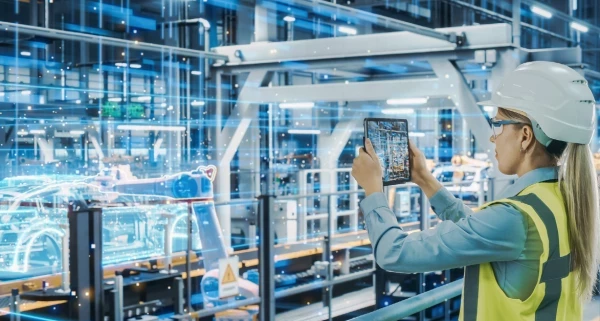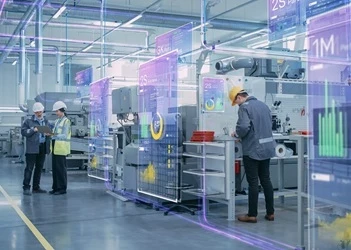Three hyperautomation trends to keep tabs on
40 under 40 digital transformation leader on the key trends shaping hyperautomation adoption and deployment such as the increasing application of process mining
Add bookmark
Hyperautomation represents the integration of a range of technologies or solutions that are either directly involved in, or facilitate, the automation of processes under a single umbrella to create a holistic approach to it.
An increasing number of business leaders are considering or are undergoing implementation for hyperautomation initiatives. The Top Strategic Technology Trends for 2022: Hyperautomation report by Gartner, revealed that in 2021 more than 80 percent of organizations consistently self-reported increased or continued investment in hyperautomation initiatives.
Vartul Mittal, 40 under 40 digital transformation leader and former leader at IBM remarks: “Three years ago, we used to see people only scratching the surface with hyperautomation, but right now their appetite to purchase and to deploy the platform has increased alongside the IT budgets organizations are working with.”
Business leaders are gaining confidence with hyperautomation
Business leaders have become more confident in the reliability of hyperautomation after initial hesitation to invest in it. In the past, chief information officers, chief strategy officers and CEOs were experimenting, trying and testing multiple platforms without committing to large-sized deployments. As explains Mittal, we are now seeing hyperautomation initiatives implemented in shorter timeframes and with much greater ease.
“Now, because most of the process automation platforms have been consolidated over the last few years, the time to experiment, time to do the vendor evaluation, time to do a proof of concept on multiple platforms has been shortened significantly,” he says. “Because of this consolidation, they look upon one major player, do the pricing, do the valuation, sign the contract and start deployment.”
Process mining has become a key part of hyperautomation initiatives
Hyperautomation has always involved process automation, initially through the use of robotic process automation (RPA). According to Mittal, the typical approach to hyperautomation initiatives has evolved to include the application of process mining, which has been discussed previously on PEX Network here and here.
Considered a cross between business process management (BPM)and data mining, it offers an incredible level of visibility over the as-is state of proceses. .
Mittal says: “Over the last 12 to 18 months, the biggest trend in hyperautomation has been process mining. It was not a very focused component of the entire transformation journey, but has been very carefully added to the journey of hyperautomation before RPA.”
Heavy programming is no longer wanted
The ease of use is a key factor to consider when discussing hyperautomation platforms and solutions. If a platform works well but would require hiring a team of highly-skilled programmers to make automations work smoothly then an organization cannot be blamed for looking elsewhere.
For this reason, hyperautomation platforms that incorporate the programming ease that comes with low-code and no-code solutions are rising in popularity.
Read PEX Network report: The importance of leveraging low-code to democratize process automation
“You will see now that the C, C++, Java or .NET based platforms which required heavy programming are much less in demand,” explains Mittal. “The platforms which have really transformed themselves to a low-code or no-code solution are being picked up very fast.”
Have we missed any of the current and major trends in hyperautomation? Let us know in the comments below.

























